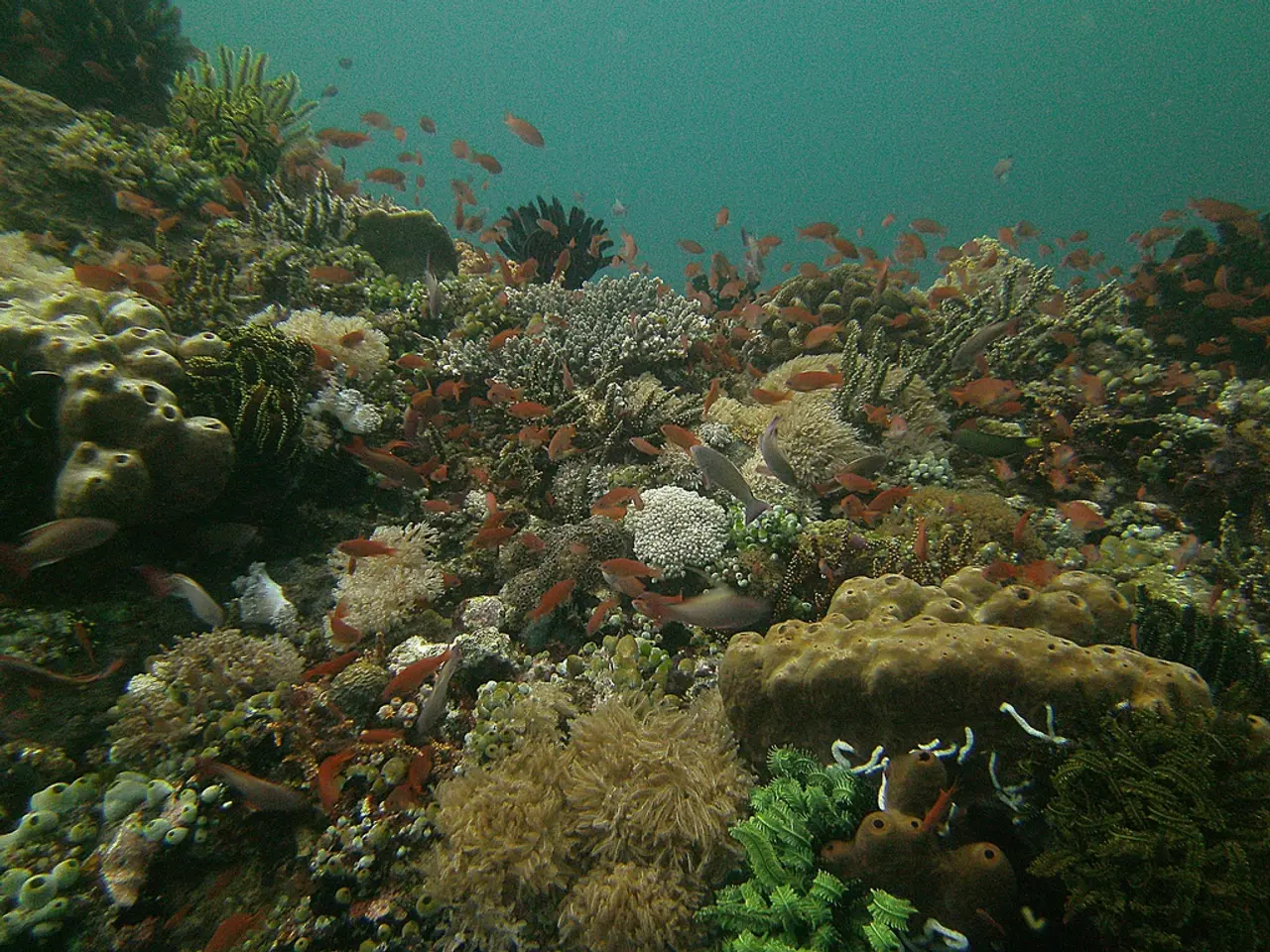Argentina's sea-dwellers delight as live stream unveils Patrick Star teaming up with drag queen crab
=========================================================================================
The Mar del Plata Canyon, a submarine gorge plunging nearly 4,000 meters deep off Argentina’s coast, is currently being explored by an Argentine-American scientific mission. This remarkable collaboration between Argentina’s leading science agency, CONICET, and the California-based nonprofit Schmidt Ocean Institute (SOI) is investigating the largely unexplored canyon using advanced ROV technology aboard SOI’s research vessel Falkor.
The mission, launched on July 22 and ongoing until August 10, 2025, is streaming live to the public, attracting millions of Argentine viewers and sparking widespread calls for restoring science funding. However, funding challenges deeply affect CONICET's ability to sustain such scientific endeavours. Since late 2023, CONICET has experienced a 21% budget cut in 2024, severe wage reductions of about 35% in salaries, and layoffs leading to more than 4,000 positions lost.
Despite these financial struggles, the expedition is led by CONICET scientists, who contribute multidisciplinary expertise in oceanography, taxonomy, and ecology. They openly share collected data with global repositories such as CONICET Digital, OBIS, and GenBank. The live streamed exploration underscores both the intrinsic scientific value and the broader societal role of such projects in fostering national pride and environmental awareness.
The expedition's leader, Daniel Lauretta, stated that anyone can connect from home and see what they are seeing live. The robot, named SuBastian, can descend to a depth of 4,500 meters, collecting biological samples with its robotic arms and sending back high-definition images. Pablo Penchaszadeh, a marine biologist and painter on board, commented on the sight of cold-water corals with colours similar to those in the Caribbean.
The confluence where the Malvinas and warm, salty Brazil currents converge is being seen by human eyes for the first time in real time. The underwater oasis teems with marine wildlife and flora, revealing animals, underwater landscapes, and behaviours that have never been recorded in this area. The public's excitement and interest in the live stream are evident in comments like "I love these little creatures," "I'm obsessed!", and "Don't take the little one away!".
Social media users have given nicknames to various sea creatures, such as a king crab being called "Drag Queen" and a sea cucumber being called "Sweet Potato". The orange starfish with symmetrical bumps resembling buttocks, reminiscent of Patrick Star from SpongeBob SquarePants, was also observed on the live stream.
The live stream has exceeded one million views per day since Thursday and is also being broadcast on television. The mission is part of the GEMPA deep-sea study group, with support from the US Schmidt Ocean Institute. Despite the financial challenges, the public broadcast is being seen as a "beacon of light" for science in Argentina during a difficult time. The cuts have led to an exodus of scientists from CONICET, highlighting the urgent need for renewed government support to continue critical deep-sea research under fiscal pressures.
- The exploration of the Mar del Plata Canyon, a collaboration between Argentina's CONICET and the California-based Schmidt Ocean Institute, is streamed live on various platforms, attracting millions of viewers and creating a demand for increased funding in environmental-science.
- The advanced ROV technology used in the expedition, named SuBastian, captures high-definition images and collects biological samples, providing entertainment and educational content for the general public while contributing to the body of scientific knowledge about the deep-sea environment.
- Political debates on social media and television have discussed the importance of funding for scientific research and education-and-self-development in the face of budget cuts at CONICET, with many highlighting the critical role of science in understanding climate-change and contributing to technology advancements.
- The expedition's live stream has resulted in the public giving nicknames to various deep-sea creatures, demonstrating the impact of entertainment and social-media on science engagement, shedding light on the diverse and fascinating life forms inhabiting the world's oceans.




